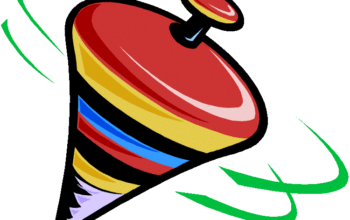In the contemporary landscape of self-publishing, crafting a journal that not only serves as a repository for one’s thoughts but also embodies the tactile appeal of a softbound, lay-flat design is an endeavor that marries artistry and functionality. The act of putting pen to paper can be likened to the delicate art of weaving, where each strand of ink interlaces with the fibers of the page, culminating in a tapestry of personal narrative. This article delves into the multifaceted process of self-publishing a journal, elucidating the intricacies involved in achieving that coveted lay-flat, softbound format.
1. Conceptualization: Defining Your Intent
The genesis of your journal lies firmly rooted in its purpose. Is it to capture fleeting thoughts, record daily reflections, or serve as a canvas for artistic expression? Engaging in preliminary brainstorming sessions can be akin to a sculptor envisioning a block of marble before chiseling begins. Identifying the audience—those who will traverse the pages of your creation—also plays a crucial role. This vision will guide your design choices, material selections, and overall structure.
2. Content Curation: Structuring Your Journal’s Essence
With the intent clearly defined, the next step involves curating content that resonates with your ethos. This process is reminiscent of a curator assembling an exhibition; you are assembling your thoughts into coherent themes. You may opt for lined pages for traditional journaling, or perhaps a mix of blank, dotted, and graph formats for a more versatile approach. Include prompts to help stimulate creativity. Consider incorporating quotes from influential thinkers or poets to invoke introspection and provide depth. Each page must speak to the reader, encouraging them to contribute their narrative.
3. Design and Aesthetics: The Visual Narrative
A journal is not merely a functional object; it is a visual narrative. The design of the cover, typography, and internal layout must align harmoniously with the content. Utilize typography that reflects the tone of the journal, whether playful or solemn. The cover material should evoke tactile pleasure; softbound covers can range from supple leather to textured paper, providing a sensory experience that invites engagement. Additionally, employing a color palette that soothes or inspires can enhance this visual narrative. When the cover feels inviting, it beckons the user to enter a world of reflection.
4. The Art of Lay-Flat Binding: A Technical Marvel
A paramount consideration for any journal intended for self-publishing is the binding method. Lay-flat binding is an innovation that allows the journal to remain open without the pages curling, thereby providing a seamless surface for writing. There are various binding techniques to explore. The *Swiss binding* method employs a hidden stitch that allows the book to lay comfortably flat. Alternatively, the *perfect binding* might be adapted with a heightened emphasis on spine width and page count to facilitate a lay-flat finish. Engaging a skilled binder or utilizing specialized equipment can ensure this requirement is met, perfecting the mechanics of the journal.
5. Material Selection: Quality Over Quantity
As the saying goes, quality is remembered long after the price is forgotten. When selecting paper, consider the weight and texture. Heavier paper not only elevates the tactile experience but also provides a surface that is accommodating to various writing instruments—be it gel pens, fountain pens, or graphite. Additionally, consider eco-friendly materials if sustainability aligns with your ethos. Using recycled papers or environmentally-conscious inks can enhance the allure of your journal, appealing to modern sensibilities of responsibility.
6. Printing: Transmuting Vision into Reality
Your journal, once conceived and designed, requires the alchemy of printing to bring it to fruition. Research printing services that specialize in self-publishing with an emphasis on quality. Engage in dialogues regarding specifications such as paper choice, binding style, and cover finish. Consider ordering samples to evaluate various options before committing to a printing house. The translation from digital to tangible product can be both exhilarating and daunting; meticulous attention during this phase can ensure that the final product exceeds expectations.
7. Distribution: Charting New Territories
With your journal printed and bound, the journey does not conclude but rather transitions into an exploration of distribution avenues. Creating an online presence through platforms like Etsy or Amazon allows you to reach a wider audience. Consider developing a marketing strategy: leverage social media to present your journal’s unique characteristics, or collaborate with influencers in niches aligned with your journal’s theme. Additionally, local bookstores or artisanal shops may serve as valuable outlets to showcase your work in your community.
8. Feedback and Iteration: The Cycle of Improvement
Upon releasing your journal into the world, actively seek feedback from users. This feedback is akin to the compass guiding you toward refinement. Encourage readers to share their experiences and insights, which can inform future editions or additional works. The creation of a journal should not be viewed as a solitary act but as a dialogue between creator and audience, leading to an evolution of ideas and formats. Iterate based on constructive criticism; innovation often stems from the willingness to learn and adapt.
In conclusion, self-publishing a softbound, lay-flat journal is not merely the product of technical skills but rather a confluence of artistry, intent, and community engagement. Each journal has the potential to become a vessel for reflection, creativity, and personal exploration. As you embark on this journey, allow your unique voice to guide the reader, creating not just a collection of pages, but an experience that encapsulates their essence—a meaningful odyssey written in the ink of introspection.










